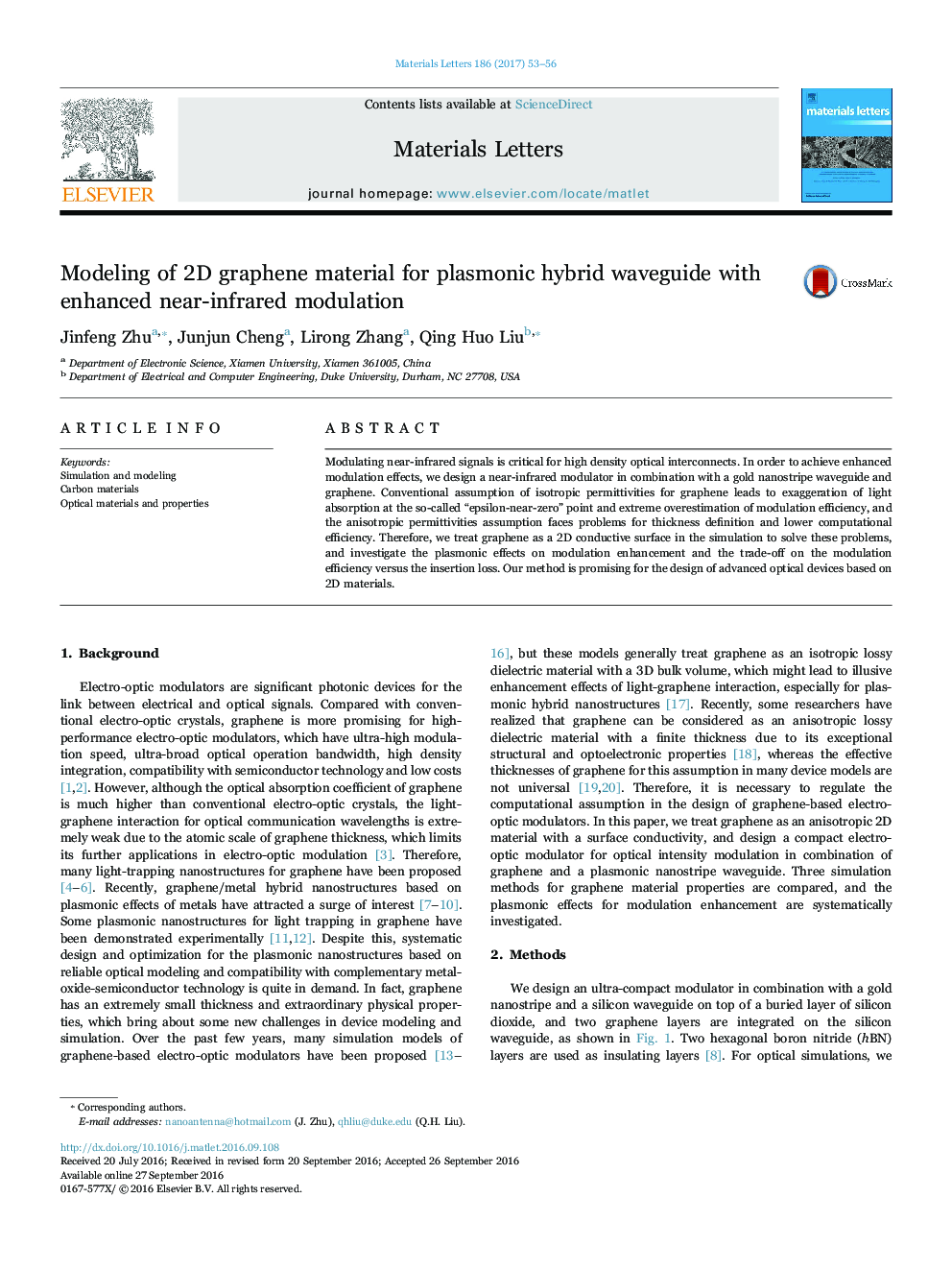| Article ID | Journal | Published Year | Pages | File Type |
|---|---|---|---|---|
| 5463681 | Materials Letters | 2017 | 4 Pages |
Abstract
Modulating near-infrared signals is critical for high density optical interconnects. In order to achieve enhanced modulation effects, we design a near-infrared modulator in combination with a gold nanostripe waveguide and graphene. Conventional assumption of isotropic permittivities for graphene leads to exaggeration of light absorption at the so-called “epsilon-near-zero” point and extreme overestimation of modulation efficiency, and the anisotropic permittivities assumption faces problems for thickness definition and lower computational efficiency. Therefore, we treat graphene as a 2D conductive surface in the simulation to solve these problems, and investigate the plasmonic effects on modulation enhancement and the trade-off on the modulation efficiency versus the insertion loss. Our method is promising for the design of advanced optical devices based on 2D materials.
Related Topics
Physical Sciences and Engineering
Materials Science
Nanotechnology
Authors
Jinfeng Zhu, Junjun Cheng, Lirong Zhang, Qing Huo Liu,
